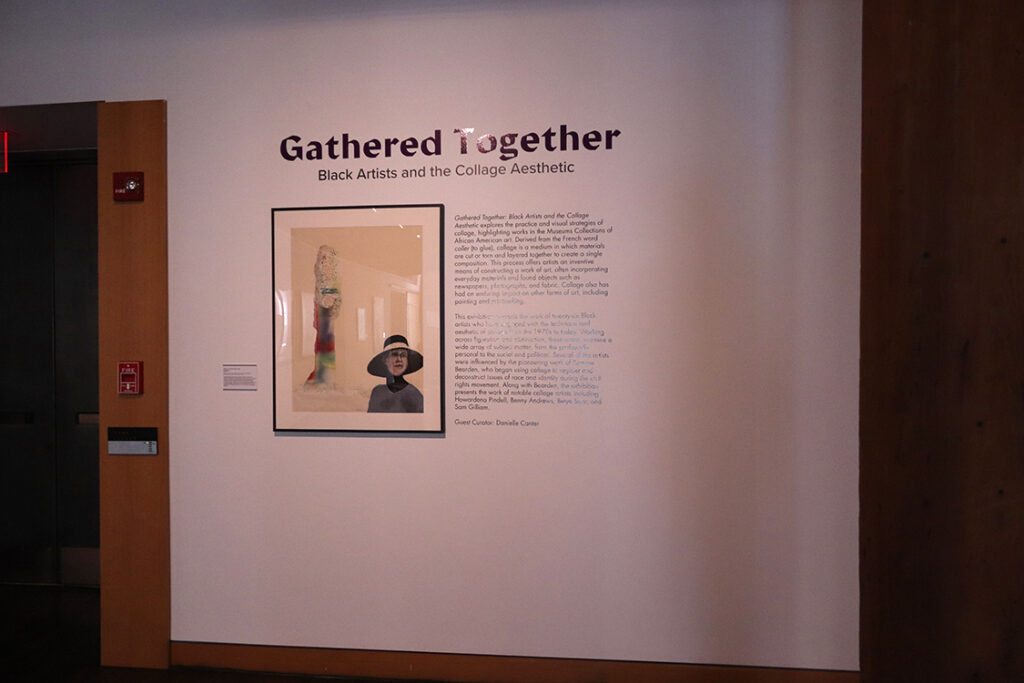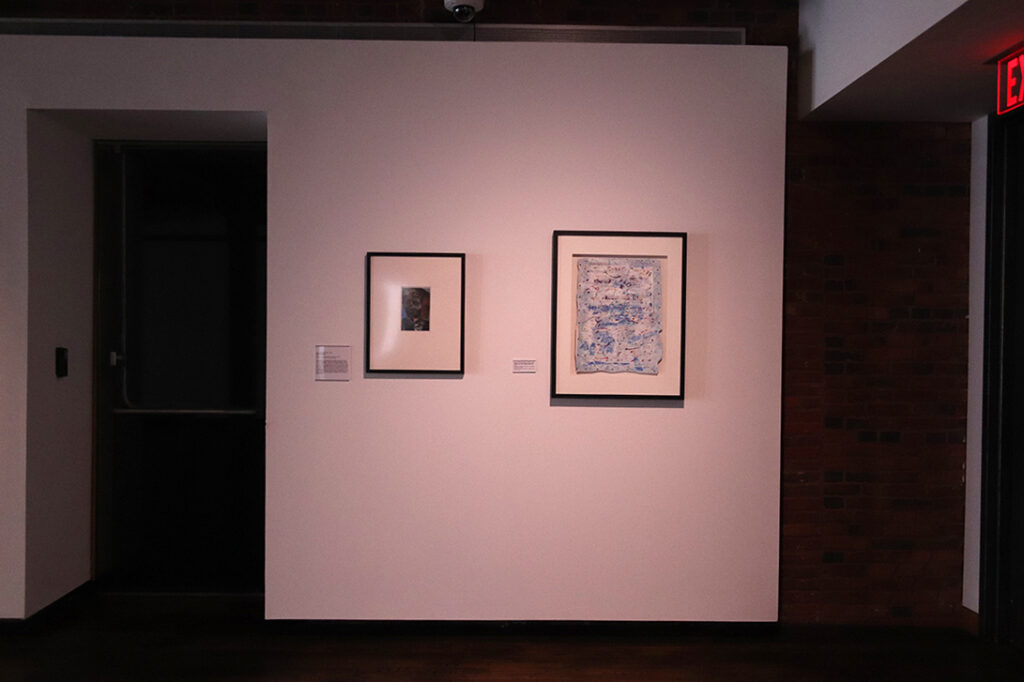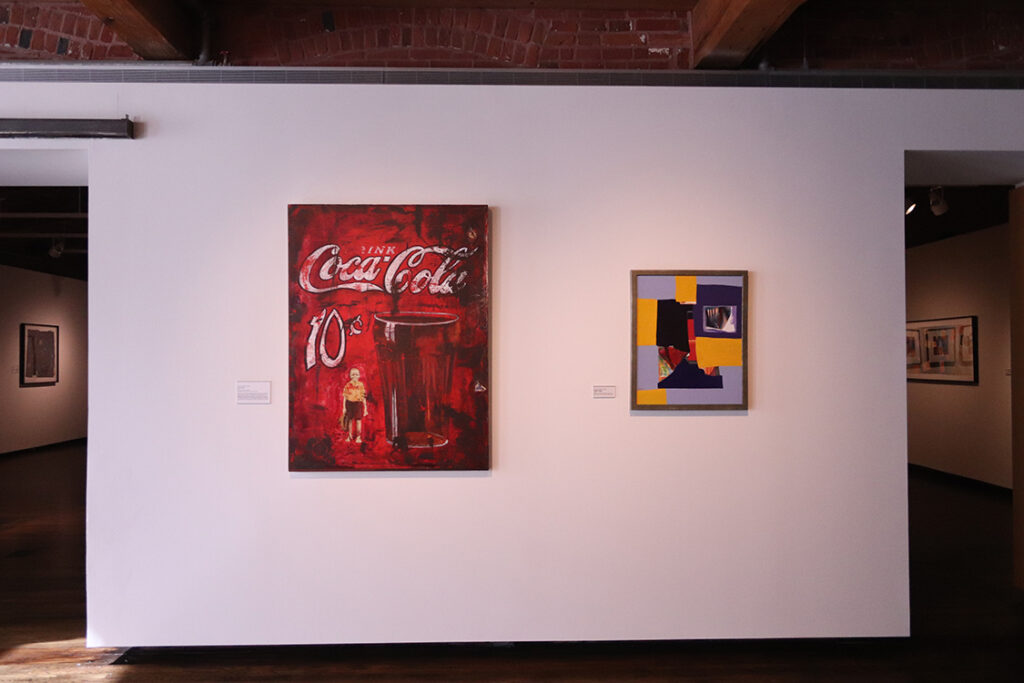




1.
Benny Andrews (1930 – 2006)
Dianne
1984
Lithograph, torn paper, fabric, ink, oilstick, and gouache
Museums Collections, Gift of Paul R. Jones
In portraits like Dianne, Benny Andrews employs a distinctive method of collage to imbue his figures with dimension and a tactile presence. Andrews first developed his collage technique in the 1950s as a student at the School of the Art Institute of Chicago. Combining scraps of paper and cloth with built up areas of paint, his portraits emphasize the humanity and individual characteristics of his subjects, even when they are set in an ambiguous or fantastical setting.
2.
Floyd Willis Coleman (1939 – 2018)
Study for DC Suite Series II
1989
Collage of cut paper with oilstick, graphite, gouache, and ink
Museums Collections, Given in Memory of Paul R. Jones
3.
David Driskell (1931 – 2020)
Masked Man
1973
Collage of cut printed paper with gouache and oil
Museums Collections, Gift of Paul R. Jones
In Masked Man, the esteemed artist, scholar, and educator David Driskell uses collage to explore the multifaceted nature of identity. In 1969, Driskell began a series of trips to Africa, including a lecture tour about African American art. By incorporating an African mask into the face of the fragmented figure in this work, Driskell considers his ancestry and experiences as an African American man. In a 1973 catalogue he explained, “In recent years, I have turned my attention to images that reflect the exciting expression that is based in the iconography of African art. In so doing, I am not attempting to create African art. Instead, I am interested in keeping alive some of the potent symbols that have significant meaning for me as a person of African descent.”
4.
Harper Trenholm Phillips (1928 - 1988)
Untitled
c. 1970
Collage of tissue paper
Museums Collections, Gift of Paul R. Jones
5.
Romare Bearden (1911 – 1988)
Firebirds
1979
Lithograph
Museums Collections, Gift of Paul R. Jones
Romare Bearden began creating collages in the early 1960s while working with Spiral, a collective of Black artists in New York. The collage medium allowed Bearden to assemble, layer, and juxtapose images into a unified whole in his socially conscious works made in response to the civil rights movement. This experimental and improvisational style is also evident in his printmaking.
During the 1970s, Bearden continued to emphasize subjects derived from the lives of Black Americans. References to religious traditions and mythology in lithographs such as Three Women (Easter Sunday) and Firebirds highlight the importance of spirituality within his work. In both of these lithographs, Bearden employs flat areas of color and pattern to emulate the effect of his paper collages. Bearden’s innovative use of the technique and aesthetic of collage has had a significant influence on later generations of artists.
6.
Romare Bearden (1911 – 1988)
Three Women (Easter Sunday)
1979
Lithograph
Museums Collections, Given in honor of David Driskell by Dr. Leslie Hayling, Jr.
7.
Lionel Lofton (b. 1954)
Yellow Stage
2001
Acrylic paint with collage of torn paper
Museums Collections, Gift of Paul R. Jones
8.
Cedric Smith (b. 1970)
Coca Cola
2001
Acrylic paint and collage
Museums Collections, Gift of Paul R. Jones
Growing up in Georgia, self-taught artist Cedric Smith noticed the striking absence of Black representation in advertising and on the labels of popular brands. In response to this observation, Smith reimagines vintage advertisements in his richly textured paintings. In works like Coca Cola, he uses a collage technique to incorporate photographs of Black figures into promotional images for products.

